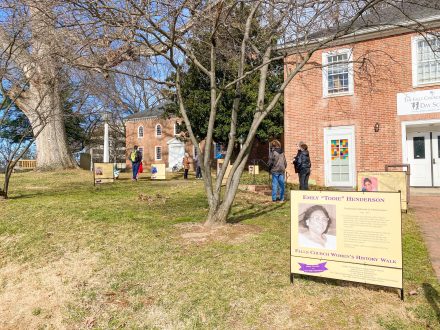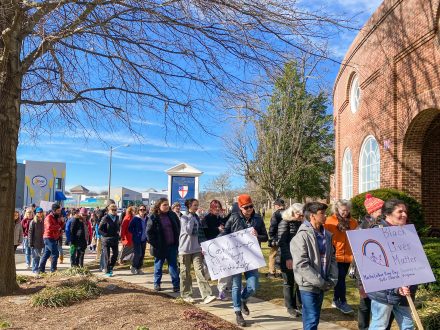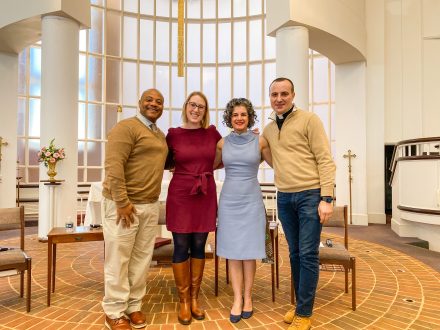by Nancy Chafin
What does racial justice ministry look like? How does a church make a concrete witness to something that has eluded our understanding for generations? One model can be found at The Falls Church, where the congregation is embracing a multi-faceted, deeply relational ministry that is integrated into all aspects of their church life and worship.
It begins with acknowledging a painful history. Like many Virginia churches built in the 1700s and 1800s, The Falls Church was built using the labor of enslaved people. Now, the congregation is delving into that history. The research team has thus far identified 40 enslaved people by name and the work continues. Through genealogical records, the team hopes to identify living descendants and connect with them.
When the Falls Church began an intentional Racial Justice Ministry three years ago, the congregation knew that the work of reconciliation doesn’t happen by staying inside the walls of the church. So they reached out to several area organizations and non-profits to involve people from communities unlike their own, including the members of the Rock Christian Center, an African-American Baptist Pentecostal congregation that worships at The Falls Church.
The church immediately looked to the Tinner Hill neighborhood because of its tragic history of racial oppression. In 1887, town officials gerrymandered the predominantly Black neighborhood around Tinner Hill out of the town limits and into the surrounding Fairfax County in order to disenfranchise the town’s black population. In the 1920s, under the auspices of eminent domain, the federal government seized the land and homes of African-American residents in order to build the Lee Highway (named for the Confederate General Robert E. Lee, since renamed Washington Street). In recent years, the Tinner Hill Heritage Foundation has documented and memorialized that history through many projects, including the creation of the Tinner Hill Civil Rights Monument.
The Tinner Hill Monument was the starting point for a march organized by The Falls Church and community partners to commemorate Martin Luther King, Jr. Day on January 16. The Rev. Matthew Dumont-Machowski, Associate Rector, said, “Marching for justice and embodying a more inclusive world is integral to our mission at The Falls Church. Each year, walking with our local community, we bear witness to our call to strengthen our partnerships with all that work for justice and amplify the voices of our black neighbors who continue to face discrimination and structural racism.”
At stops along the route, descendants of the Tinner Hill brought history to life. “It was illuminating to hear the stories of the families who lost property because of eminent domain and were never made whole,” said Canon Hill. “Just think about the lasting economic impact that has on an already marginalized and oppressed people.”
The march culminated at The Falls Church where the church hosted a panel discussion on “How to Be an Anti-Racist.” Speakers were the Rev. Dr. J. Lee Hill, Jr., Canon for Racial Justice and Healing in the Diocese of Virginia, and the Hon. Parisa Dehghani-Tafti, Commonwealth’s Attorney for Arlington County and the City of Falls Church. Much of Ms. Dehghani-Tafti’s work focuses on racial justice in the legal system.
Canon Hill noted that the dialog offered a unique pairing of a legal perspective and a theological perspective on racial justice. “It was inspiring to hear about the spaces where are all seeking to embody this idea of Beloved Community and trying to realize Dr. King’s dream.”
The Falls Church has also erected an exhibit on its campus featuring markers that honor important African American women in the history of the city of Falls Church.



